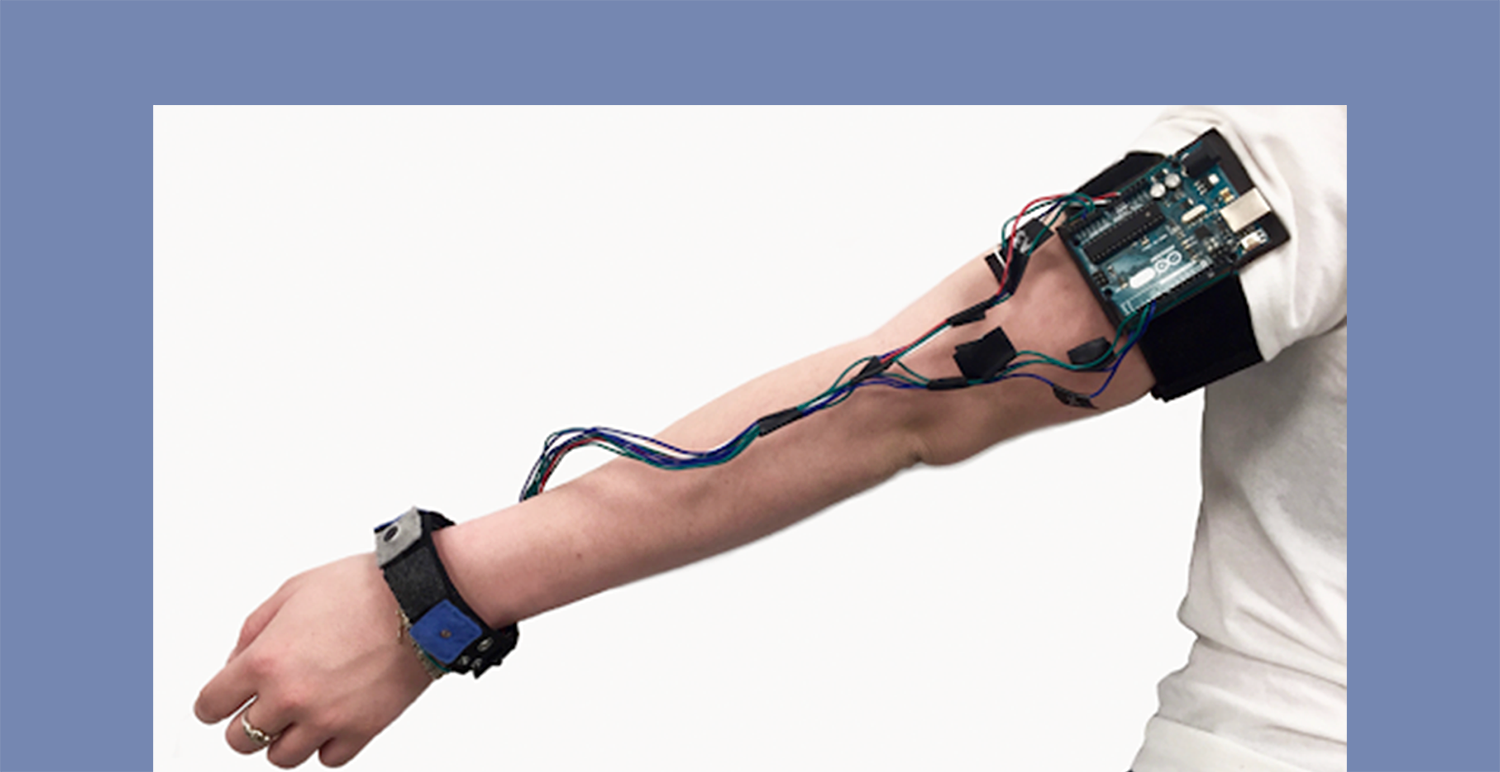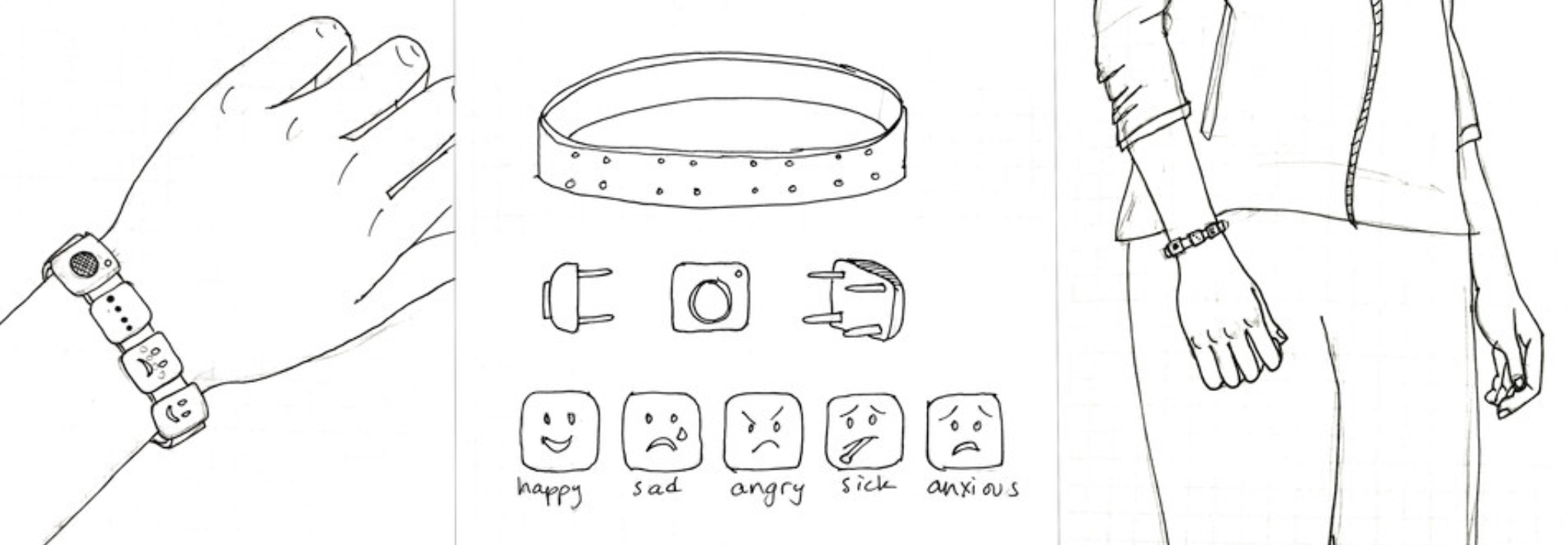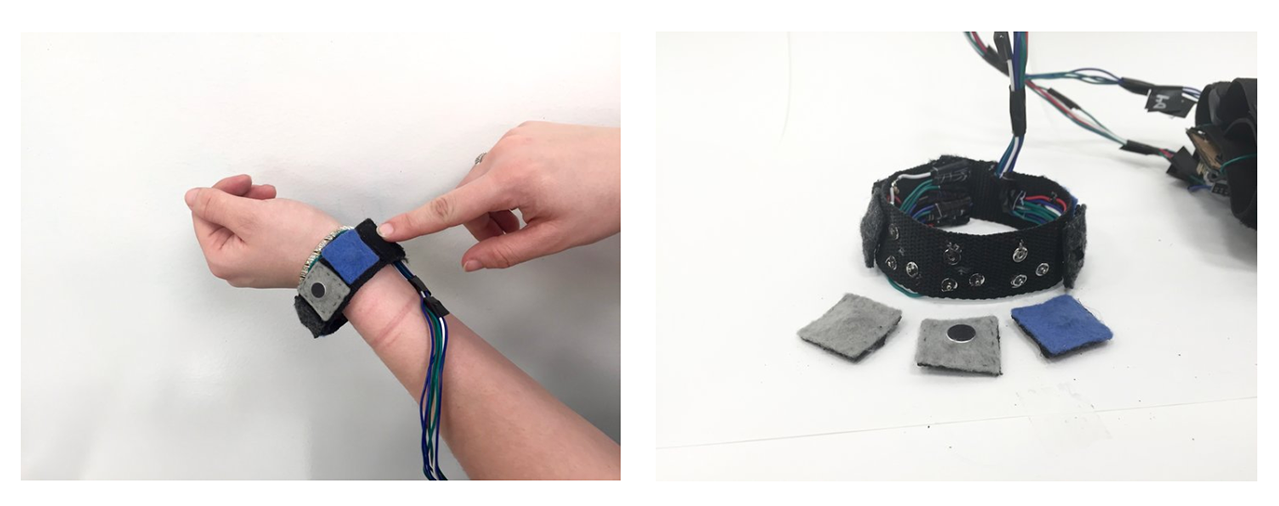
Sentire - The Customizable Journaling Bracelet
We created a data-tracking baracelet that empowered people to personalize recording their daily habits in a way that reduced the burden of typical phone/paper note-taking.
Challenge 🤔
Recording peronal information can lack personalization, and it is typically inconvenient and time-intensive, especially in the context of health.
Outcome ⭐
We created Sentire ("to feel" in Latin), a customizable journaling bracelet that empowers people to keep track of what matters to them most throughout the day.
My Role 💡
As part of a 3-person team, I condudcted user interviews, created user journeys, and built the physical and circuitry components of the Sentire bracelet.
User Groups and Needs 👥
Before diving into a fully fledged design solution, we made sure to define our target users so we could effectively focus on addressing their needs with our customizable bracelet.

-
User needs: a stylish and interesting design, options for passive data inputs, and the ability to understand the data in useful contexts.
User needs: accesible cost, a comfortable + durable accesory, usability specific to children, meaningful results in context
User needs: Rapid interaction learnability, encouragement or reminder to use throughout event, easy to distribute, large scale data output for institutions/conferences
Bracelet Sketches 🗒️

Once we had a sense of the needs of our users, we began sketching prototypes - the final sketches above were created by my teammate, Belle Noonan.
The early sketches captured which kinds of sensors and buttons we planned to use to make each bracelet bead. The beads would support customization for our variety of users.
Our team decided this bracelet would keep have a light sensor an thermometer. It would also track a user’s day through heart rate tracking, skin conductivity to measure stress, a method to initiate an audio recording, and user inputted emotions and actions through the interactive buttons.
Low-Fidelity Prototype 🔧

We created a cheap and fuzzy low-fidelity prototype to begin our user testing and concept validation. We organized and ran a user study with participants in order to gleen which of our designed interactions were intuitive and easy.
We asked users to go through the motions of building + customizing their bracelet. We also asked users to record their moods and feelings while using the bracelet. Although our design was limited (and haptic feedback would've been awesome to have in this test), we recieved terrific feedback that helped us to validate our concept.
Working Prototype ⚙️

Our first functional ptotoype iteration helped us validate that our product would work, and it also helped us understand our ideal material design. We use conductive thread to create detachable sensor beads. We built each bead to have a dedicated tool - a button, a microphone, a light sensor, and a temperature sensor.
We realized quickly that velcro was the wrong material choice to use for the bracelet- it was uncomfortable, loud, and did not meet our requirements. This realization led us to pivot materials for our next prototype iteration.
Further Iteration ✏️

Our second ptotoype iteration was much closer to the real deal. We built a bracelet design with nylon webbing, clasps, wires, conductive thread, and arduino sensors. The snaps provided satisfying tactile feedback for users & also creates predetermined, modular spots for the beads to attach to. As part of this concept prototyping, we built a test circuit with two buttons, a light sensor, and an LED to be migrated onto beads and then the bracelet.
Final Prototype 💎

Our final bracelet prototype features four modular buttons and three modular sensors that can be rearranged with each other.
Our bracelet prototype was powered by Arduino. To ensure all buttons and sensors worked correctly and were supplied with even voltage, each modular snap-in location has a resistor attaching the ground snap to the ground wire.
This setup creates a fully functional parallel circuit with four digital output spots and three analog output spots.